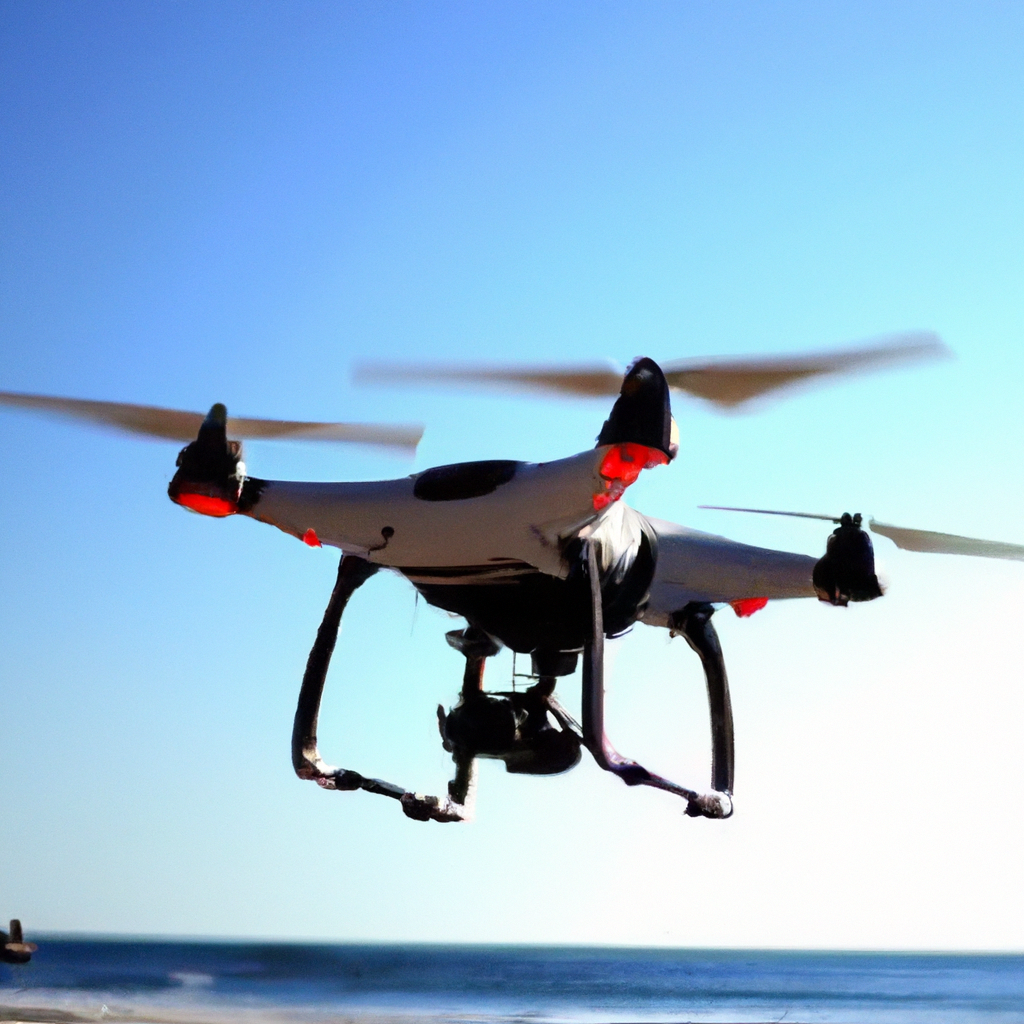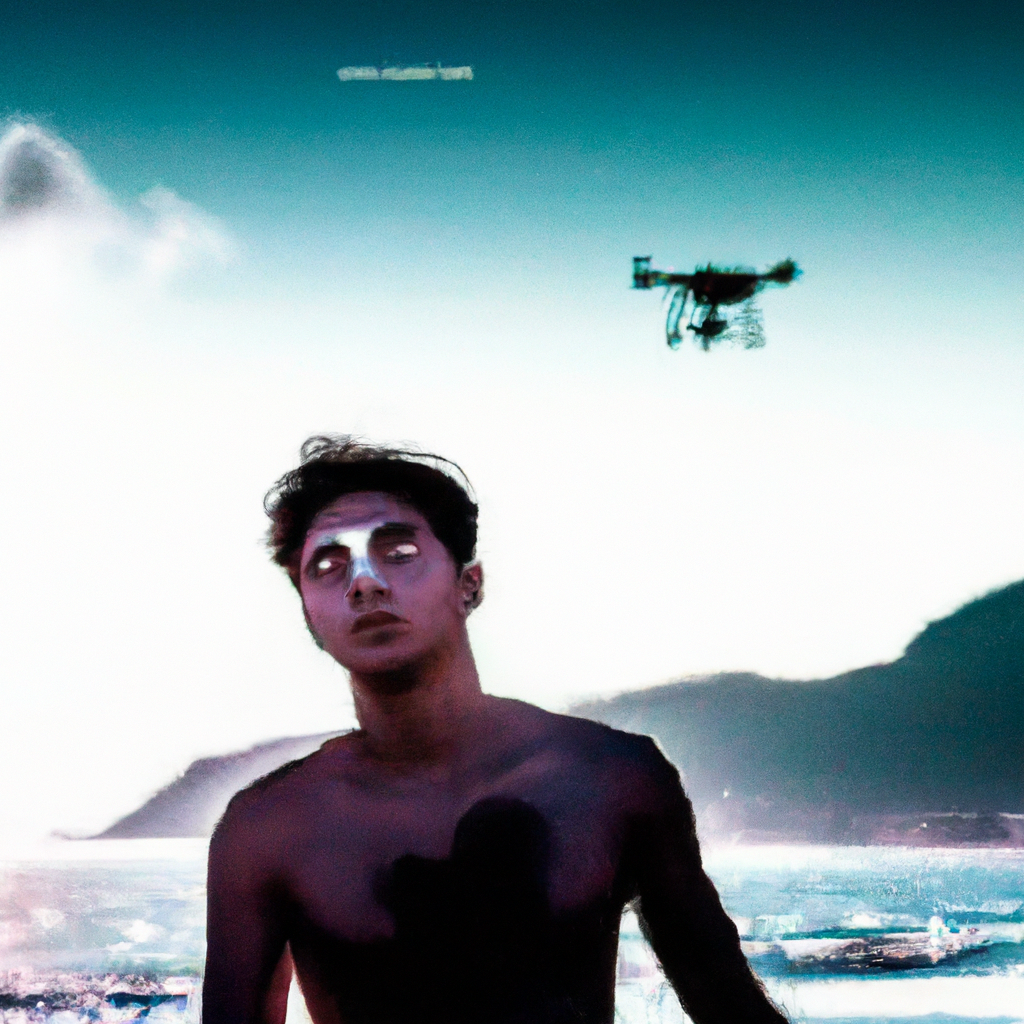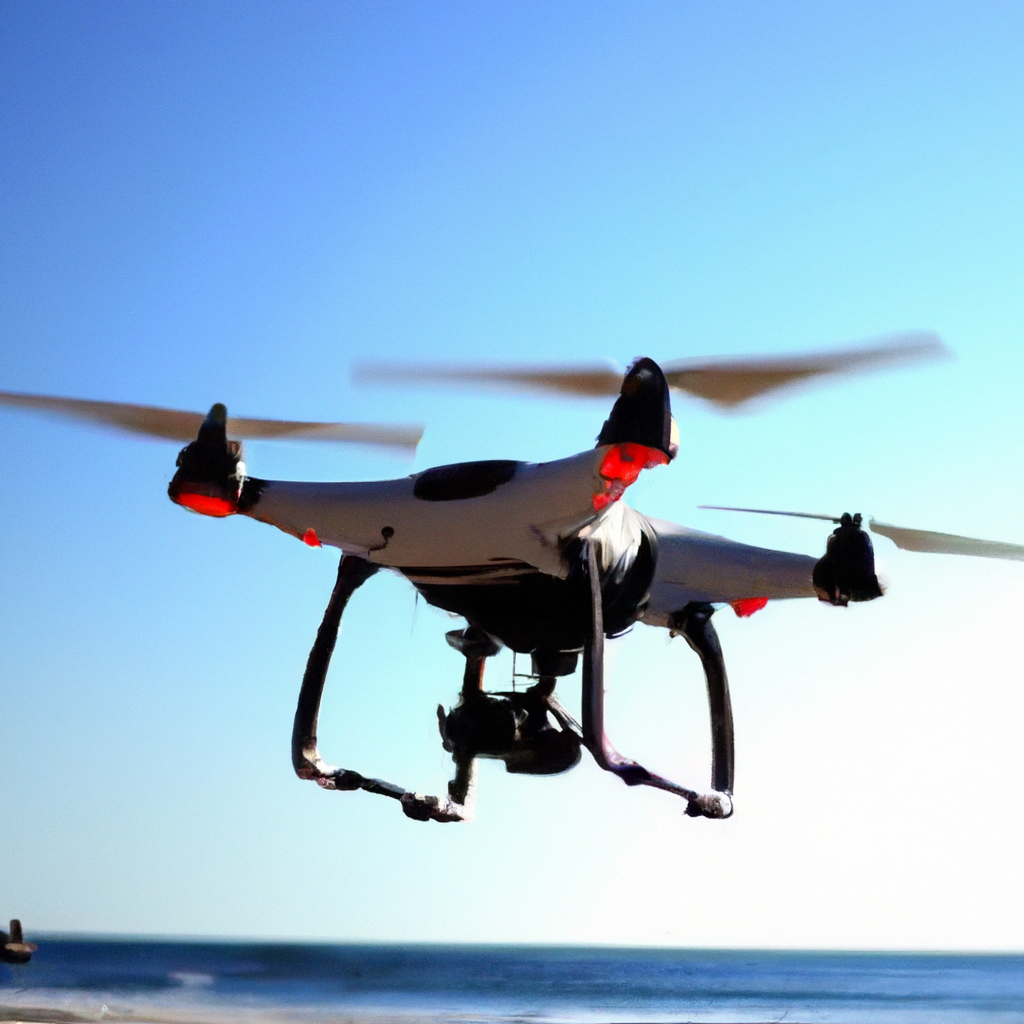So you’ve got yourself a shiny new drone and you can’t wait to take it out for a spin on Panama City Beach. But before you rush off to capture breathtaking aerial footage or indulge in some daring drone stunts, it’s important to find out whether or not drones are actually allowed on the pristine sandy shores of Panama City Beach. This article will give you all the answers you need, so you can navigate the regulations and take flight without any legal hiccups.

Federal Regulations
Federal Aviation Administration (FAA)
The Federal Aviation Administration (FAA) is the governing body that oversees all aviation activities in the United States, including the use of drones. They have established a set of rules known as Part 107, which specifically address the operation of drones for commercial purposes. These rules outline the requirements and limitations that drone pilots must adhere to in order to ensure safety and compliance with federal regulations. It is important for drone operators to familiarize themselves with these rules and ensure they are followed while flying in Panama City Beach.
Part 107 Rules
The Part 107 rules, established by the FAA, outline the regulations that drone pilots must follow when operating their drones for commercial purposes. These rules cover topics such as pilot certification, aircraft registration, and operational limitations. For example, drone pilots must obtain a Remote Pilot Certificate from the FAA and are required to keep their drone within visual line of sight at all times. Additionally, drones are not allowed to fly over people or operate in restricted airspace without proper authorization. Familiarizing yourself with these rules is crucial to ensure safe and legal drone operations in Panama City Beach.
Temporary Flight Restrictions (TFRs)
Temporary Flight Restrictions (TFRs) are put in place by the FAA to restrict airspace during certain periods or events. These restrictions are often implemented for safety and security reasons, such as during wildfires or major sporting events. It is essential for drone operators to check for any TFRs in the area before flying in Panama City Beach. Flying in restricted airspace without proper authorization can result in severe penalties and fines, so it is important to stay informed and comply with any TFRs that may be in effect.
State Regulations
Florida State Laws
In addition to federal regulations, drone operators in Panama City Beach must also comply with state laws regarding the operation of drones. Florida has enacted its own set of laws that govern the use of drones within the state’s borders. These laws cover topics such as privacy, trespassing, and drone use near critical infrastructure. It is important for drone operators to familiarize themselves with these laws and ensure they are followed to avoid any legal issues while flying in Panama City Beach.
Florida Department of Environmental Protection (FDEP)
The Florida Department of Environmental Protection (FDEP) plays a significant role in regulating the use of drones, particularly in environmentally sensitive areas. They have established guidelines and restrictions to protect Florida’s natural resources and wildlife. Drone operators should consult the FDEP’s regulations and guidelines to ensure they are aware of any restricted areas or operating limitations in Panama City Beach. Flying drones in conservation areas without proper authorization can cause harm to the fragile ecosystems and wildlife, leading to legal consequences.
Panama City Beach Laws
In addition to federal and state regulations, Panama City Beach has its own specific regulations regarding the use of drones. These local laws are designed to maintain the safety and privacy of residents and visitors. Drone operators should familiarize themselves with the specific regulations applicable to Panama City Beach and ensure compliance to avoid any legal issues. It is important to respect the privacy and safety of others while flying drones in public areas and adhere to any restrictions or limitations set by local authorities.
Drone Permits
Obtaining a Permit
Drone permits may be required for certain types of drone operations in Panama City Beach. These permits are typically necessary for commercial drone operations, but it is important to check local regulations to determine if a permit is required for recreational use as well. To obtain a permit, drone operators usually need to submit an application to the appropriate authority and provide information about their drone, intended use, and their qualifications as a pilot. It may also be necessary to provide proof of liability insurance and any required certifications.
Permit Fees
Depending on the jurisdiction and the type of drone operation, there may be fees associated with obtaining a drone permit in Panama City Beach. These fees can vary and may be based on factors such as the duration of the permit, the type of drone being used, and the purpose of the operation. It is essential to research and understand the fee structure and any associated costs before applying for a drone permit.
Permit Application Process
The drone permit application process typically involves submitting an application form provided by the relevant authority. The application form may require details such as the drone operator’s contact information, drone specifications, intended flight plans, and proof of pilot certification or training. It is important to provide accurate and complete information to expedite the application process. After submitting the application, there may be a waiting period for review and approval. Drone operators should plan accordingly and allow sufficient time for the application to be processed before conducting any drone operations in Panama City Beach.

Restricted Areas
No-Fly Zones
No-fly zones are areas where drones are strictly prohibited from flying. These zones usually include airports, military installations, and other sensitive areas where drone operations could pose a risk to aviation or national security. It is crucial for drone operators to be aware of the designated no-fly zones in Panama City Beach and strictly adhere to the restrictions. Violating the no-fly zones can have serious consequences, including fines, legal action, and even the loss of the drone.
Wildlife Conservation Areas
Panama City Beach is home to various wildlife conservation areas that are protected by state and local authorities. These areas may have specific restrictions on drone operations to safeguard the natural habitats and wildlife. It is important to research and respect the limitations imposed by these conservation areas. Flying drones in restricted wildlife conservation areas can disrupt wildlife, disturb nesting sites, and cause harm to vulnerable species. Drone operators should consult the respective authorities or agencies responsible for managing these areas to ensure compliance with their regulations.
Beach and Waterfront Restrictions
Panama City Beach’s beautiful coastline and waterfront areas are popular destinations for tourists and locals alike. However, there may be specific restrictions on drone operations along the beach and waterfront. These restrictions are in place to protect the privacy and safety of beachgoers and water activities. It is important to be aware of any designated fly zones, flight altitude limitations, and operating hours in these areas. Drones should not be flown too close to people, and operators should always prioritize the safety and privacy of others while enjoying the stunning views over the beach and waterfront.
Safety and Privacy Concerns
Risk of Collision
One of the primary safety concerns associated with drone operations is the risk of collision with other aircraft, structures, or people. In congested areas like Panama City Beach, where there are often many people and various other aircraft, it is crucial for drone operators to exercise caution and ensure the safety of those nearby. Following the FAA’s Part 107 rules, maintaining visual line of sight, and avoiding flying over people or crowded areas can significantly reduce the risk of collisions and accidents. Prioritizing safety should always be the top concern for responsible drone pilots.
Privacy Laws and Regulations
In addition to safety considerations, drone operators must also be mindful of privacy laws and regulations. It is important to respect people’s privacy and not infringe upon their personal space while operating a drone. Avoid flying over private properties without permission and refrain from recording or capturing images that would violate someone’s reasonable expectation of privacy. Understanding and adhering to privacy laws and regulations can help navigate potential legal issues and maintain a positive perception of drone use in Panama City Beach.
Harassment or Invasion of Privacy
Drone operators must be aware of potential issues related to harassment or invasion of privacy while operating drones in Panama City Beach. Actions such as hovering near people’s windows or capturing images without consent can infringe upon their privacy and cause distress. It is crucial to operate drones responsibly and ethically, always considering the impact on others. Drone operators should be considerate of people’s personal space and act in a manner that respects their privacy and ensures a positive experience for everyone involved.
Enforcement and Penalties
Enforcement Agencies
Enforcement of drone regulations in Panama City Beach is primarily carried out by various authorities, including local law enforcement agencies and federal entities such as the FAA. These agencies have the authority to investigate and enforce penalties in the event of non-compliance with drone regulations. It is important for drone operators to cooperate with enforcement personnel and provide any necessary documentation or information they may request. Understanding the role and authority of these enforcement agencies can help ensure a smooth and legal drone operation in Panama City Beach.
Penalties and Fines
Violations of drone regulations can result in significant penalties and fines. The exact penalties may vary depending on the severity of the violation and the specific regulations being violated. Common penalties include monetary fines, confiscation of the drone, and even criminal charges in extreme cases. By familiarizing themselves with the rules and regulations discussed earlier, drone operators can minimize the risk of violation and the associated penalties. It is crucial to recognize that non-compliance can lead to serious consequences, including legal trouble and damage to the reputation of drone operators and the drone industry as a whole.
Public Opinion
Support for Drone Use
In Panama City Beach, as in many other places, there is a wide range of public opinions regarding the use of drones. Many people recognize the potential benefits of drones, such as aerial photography, surveying, and search and rescue operations. Drones have also become popular among hobbyists who enjoy capturing stunning photos and videos from unique perspectives. Those who support drone use appreciate the value these unmanned aerial vehicles bring to various industries and recreational activities and believe that responsible drone operators should be able to enjoy their hobby or conduct their businesses legally and safely.
Opposition to Drone Use
On the other hand, some individuals and groups have concerns and objections to the use of drones. Common concerns include noise pollution, invasion of privacy, and the potential for accidents or collisions. While these concerns are valid, it is important to recognize that responsible drone operators follow regulations and take precautions to minimize any negative impact on public safety and privacy. By adhering to regulations, addressing public concerns, and engaging in open dialogue, the drone community can work towards finding common ground and ensure that drone operations are conducted in a responsible and respectful manner.
Public Perception and Awareness
Public perception of drones heavily influences the regulatory environment and public policies surrounding their use. It is essential for drone operators to contribute to positive public perception through responsible and ethical drone operations. By promoting safety, respecting privacy, and engaging with the local community, drone operators can help raise awareness and foster a better understanding of how drones can be used for the benefit of society. Education and outreach programs can help bridge any knowledge gaps and dispel misconceptions about drone use, fostering a favorable perception of drones in Panama City Beach and beyond.
Alternatives to Drone Use
Photography and Videography Services
For individuals or businesses looking to capture aerial photos or videos without the use of drones, there are alternative options available. Professional photography and videography services often have access to equipment such as helicopters or cranes, which allow for stunning aerial imagery. These services provide a safe and legally compliant alternative to drone use while still achieving the desired results.
Helicopter Tours
If experiencing Panama City Beach from the air is a priority, helicopter tours offer a unique and thrilling opportunity. Helicopter tours provide a safe and controlled environment for individuals to enjoy breathtaking aerial views of the area. These tours are operated by experienced pilots who are well-versed in aviation regulations and are a popular option for tourists and locals alike.
Traditional Photography and Videography
While drones have gained popularity for their aerial capabilities, traditional photography and videography methods still offer excellent results. Utilizing ground-based equipment such as tripods, steady-cams, or handheld devices can capture beautiful imagery and videos without the need for drones. These methods provide an alternative for those who are not comfortable or permitted to use drones in Panama City Beach.
Best Practices for Drone Pilots
Know the Regulations
The most crucial aspect of being a responsible drone pilot is understanding and complying with all relevant regulations. Familiarize yourself with both federal and local regulations that apply to Panama City Beach and ensure that you meet all requirements before operating a drone. Regularly check for updates or changes in the regulations to stay informed and avoid any potential legal issues.
Fly Responsibly
Operating a drone responsibly means considering the safety and privacy of others. Avoid flying over crowded areas, respect people’s privacy, and maintain a safe distance from structures, vehicles, and people. Always prioritize safety over capturing the perfect shot and be prepared to make quick decisions to avoid any potential accidents or damage.
Maintain Line of Sight
Maintaining visual line of sight with your drone is a crucial safety measure outlined in the FAA’s Part 107 rules. Being able to see and control your drone at all times allows you to respond quickly to any potential hazards and avoid collisions. Avoid flying your drone beyond your visual range and ensure that obstructions, such as buildings or trees, do not obstruct your line of sight.
Conclusion
Operating a drone in Panama City Beach requires a thorough understanding of federal, state, and local regulations. By familiarizing yourself with these regulations and responsibly adhering to them, you can ensure the safety of yourself and others while enjoying the benefits that drones offer. Remember to respect the privacy and safety of others, be aware of any restricted areas, and always prioritize the well-being of those around you. By following these best practices, you can contribute to a positive perception of drone use and help create a safe and enjoyable environment for all in Panama City Beach.
